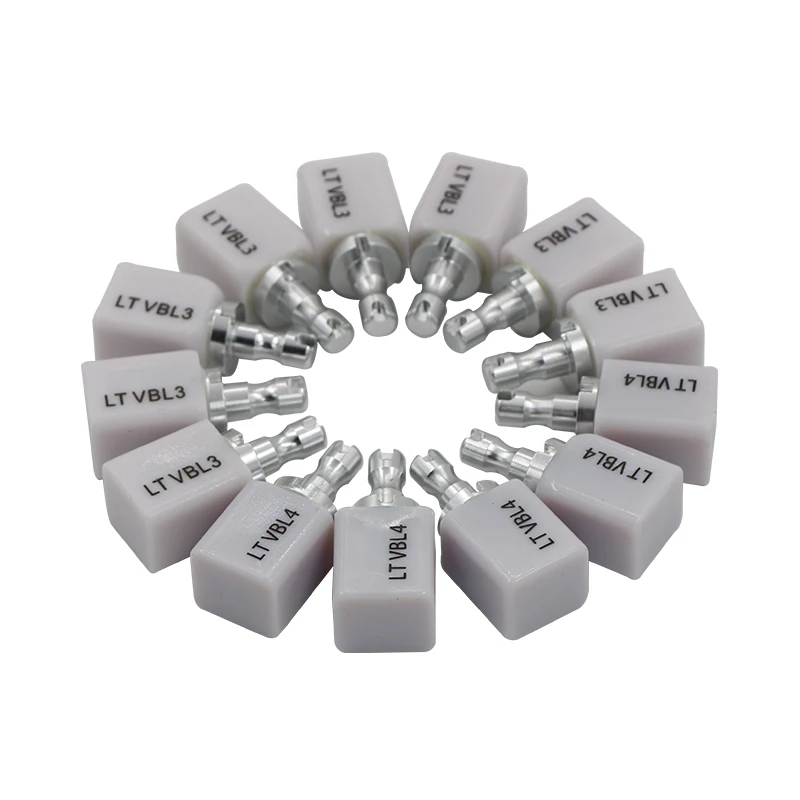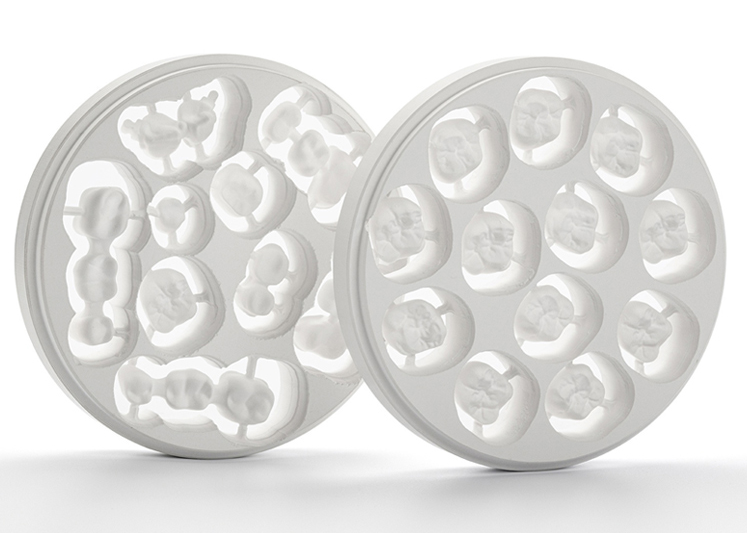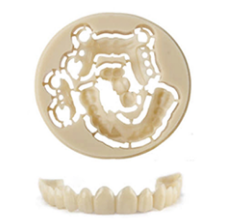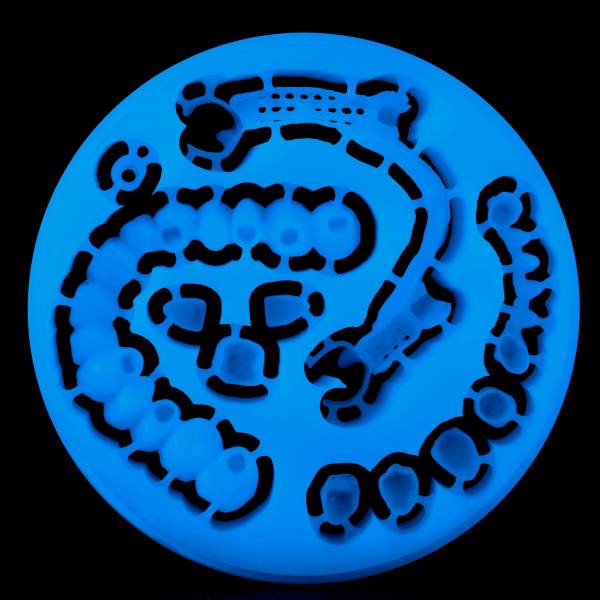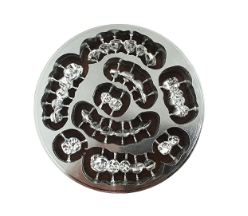Common Materials Used In Dentistry
The most common materials used for dental restorations are:
Glass ceramics
Properties Available in various shades and translucency levels.
Indications Crowns, partial crowns, inlays, onlays, veneers, small bridges, two-piece abutments
Machining Glass ceramics are ground. The manufactured objects can be veneered or, if they are used as fully anatomical restorations, painted. In many cases, they are sintered so that they can reach the final strength and the desired esthetic properties like color and translucency level.
Zirconia (opaque)
Properties Highest fracture strength and hardness of all dental ceramics. Micro cracks can permanently be avoided. Due to its opaqueness, the material should only be used for posterior tooth restorations unless it is veneered with a translucent material.
Indications Crowns, copings, inlays, onlays, veneers, bridges, bridge frameworks, abutments.
Machining The unsintered blank is far softer than the finished ceramic, which makes it easier to process. During sintering at approximately 1200° C, the material shrinks by about 25%. As a consequence, the material solidifies and porous surfaces get filled.
Zirconia (translucent & shaded)
Properties Due to a different material mixture and higher sintering temperature, zirconia blanks can become translucent. Translucent blanks are harder than opaque zirconia blanks, but the breaking strength is decreased. In addition, also pre-shaded blanks are available. There are even blanks available with a gradient with layers of different shades and translucency for the most esthetic outcome.
Indications Due to the translucency, unveneered restorations can also be used in the anterior region.
Machining Like opaque zirconia, but with different sintering parameters.
PMMA (polymethylmethacrylate)
Properties PMMA is a versatile plastic with high translucency. Very suitable for coloring. Great surface quality when processing fissures.
Indications Bite splints, casting molds, temporary crowns and bridges, long-term temporaries.
Machining PMMA discs of any color can be milled.
Wax
Properties Dental wax is a mixture of 2 or more waxes with other additives, used in dentistry for casts among other things. If plastic is added, borders will become more stable, which results in faster machining and more precise results.
Indications For the production of casting molds.
Machining Milled from discs of wax.
Non-precious metals
Properties These are alloys made of chrome, cobalt (CoCr) and small amounts of tungsten and molybdenum. Non-precious metals are often used as a less expensive alternative to gold. Their disadvantages are a less esthetic appeal and that they can be allergenic. NPM offers about twice the strength of precious metal alloys.
Indications Crowns, long-span bridges, abutments, telescopic crowns.
Machining Usually, restorations are milled out of the full material with the final hardness and without sintering. Restorations can also be milled out of softer wax-like discs and then sintered with argon gas.
Chairside workflow and labside workflow
When manufacturing restorations, two different workflows can be distinguished: The labside workflow and the chairside workflow.
Labside workflow When restorations are produced on behalf of a dentist in a dental laboratory, the process is called a labside workflow. A dental laboratory is an independent commercial laboratory, often run by a dental technician. Usually, independent dental laboratories offer the full range of restorations.
Chairside workflow If restorations are fabricated near the dental chair or in a practice laboratory, the process is called chairside workflow. Practice laboratories are dental laboratories run by a dentist. The dentist may employ a dental technician to carry out the actual work. Usually, only less complex restorations such as simple inlays, onlays, crowns, small bridges and veneers are manufactured in a practice lab.

